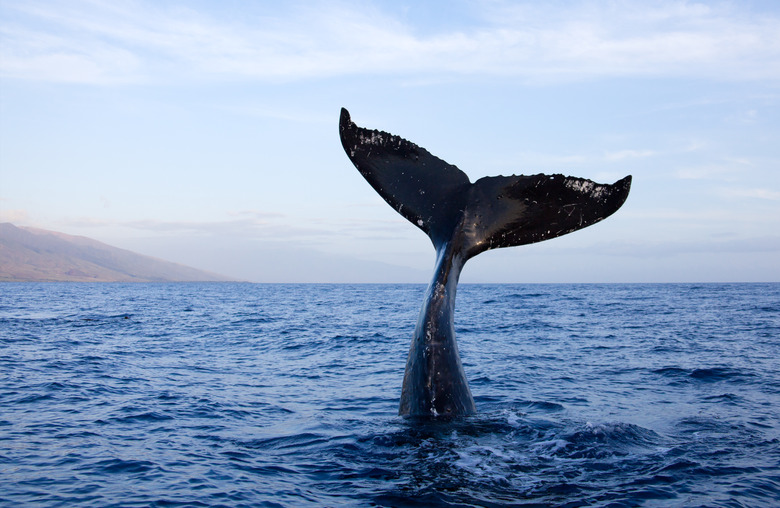How To Identify Whale Bones
Whales are mammals of the sea, which makes their bones readily distinguishable from those of earth mammals. For instance, whales and other marine mammals never have a gap between teeth in the cheek and the front teeth. Whale teeth can be attributed to specific species and are usually 3 to 11 inches long. Some whale skulls do not have teeth at all as baleen whales feed differently. The bodies of these creatures can measure up to 18 meters. Their skeletons can weigh thousands of pounds.
Skeletal Differences in Whales
Step 1
Look in the mouths of unidentified skulls. According to BBC Wildlife's online magazine, whale skulls may be toothed and baleen. Baleen means their mouths are lined with keratin instead of teeth. According to the Ask Dr. Galapagos column on The Flying Turtle website, dolphins are kinds of whales. Their teeth can number from the dozens to the hundreds. Toothed whales also have round skulls, short teeth shaped like wedges and narrow snouts. The keratin plates of baleen whales are located on each side of the upper jaw and filter food from ocean water. Strands of baleen plates form a sieve. Unfortunately, by the time the skulls of these whales sweep ashore, the baleen is usually no longer present. Baleen can grow longer than a meter in large whales.
Step 2
Look at the back bone or vertebrae. Vertebrae of large whales are often the same shape and size of an average dinner plate. According to researcher Nicholas Higgs, whale bones of the lower back have a 40 percent higher oil content than those of the upper back. Bones of the whale's lower back are easy to identify because they preserve the longest due to the high oil content.
Step 3
Know the North Atlantic whale by its weight and length. According to an article published by the Natural History Museum, a headless but otherwise intact North Atlantic whale skeleton found underneath the British river Thames, weighed close to 1,000 lbs. and was 7 meters in length. If a fully mature North Atlantic whale skeleton is found, it can be expected to weigh more than 60 tons or 120,000 lbs. and measure up to 17 meters in length.
Step 4
Identify the sperm whale specifically. This whale is highly treasured because 30 of its teeth may be used for ivory. Sperm whale ivory teeth measure up to 8 inches in length and 3 inches in width. The first half of each tooth length is hollow. The teeth have two layers and the dentin, or outer tooth layer, is marbleized with round, yellow globules. According to the Natural History Museum, mature sperm whale skeletons can measure up to 18 meters in length. In 2007, a sperm whale skull delivered to the museum weighed in at nearly 2,000 lbs.
Cite This Article
MLA
McLeod, Sarah. "How To Identify Whale Bones" sciencing.com, https://www.sciencing.com/how-7693034-identify-whale-bones/. 22 November 2019.
APA
McLeod, Sarah. (2019, November 22). How To Identify Whale Bones. sciencing.com. Retrieved from https://www.sciencing.com/how-7693034-identify-whale-bones/
Chicago
McLeod, Sarah. How To Identify Whale Bones last modified March 24, 2022. https://www.sciencing.com/how-7693034-identify-whale-bones/
